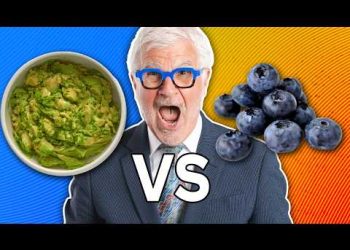The Crowning Jewels of the Sea: Top 3 Healthiest Fish
Fish is often hailed as an elixir for health and longevity. However, not every fish offers the same health benefits. In this article, we dive into the top three healthiest fish you should add to your diet for their incredible health properties. Additionally, we’ll explore three fish you should avoid, including one surprise entry. Stay tuned to discover these dietary gems!
1. Wild-Caught Salmon: Omega-3 Powerhouse
Wild-caught salmon tops the list for its high concentrations of omega-3 fatty acids, selenium, and vitamin B12. These nutrients are vital for reducing inflammation and maintaining cellular health. Additionally, wild-caught salmon carries lower risks of heavy metal contamination due to its softer tissue structure. If availability is a concern, frozen options provide an equally nutritious choice, thanks to the flash-freezing process that preserves its nutrient density.
2. Sardines: Small but Mighty
Sardines may be small, but they pack a powerful nutritional punch. These tiny fish are rich in omega-3 fatty acids and selenium and have lower levels of heavy metals. Modern canning processes ensure sardines are free from contaminants like BPA. They’re versatile in the kitchen, perfect for salads, toast, or as a nutritious dip.
3. Mussels: Shell-Bound Treasures
Mussels offer a protein-rich option that’s also high in omega-3s and selenium. They excel in providing essential trace minerals necessary for various bodily functions. They’re easy to prepare by steaming in herbs and broth, and their filter-feeding nature makes them less prone to contamination. Moreover, mussels are one of the most sustainable seafood options, contributing to environmental conservation.
Fish to Avoid: Sharks
While sharks are top ocean predators, they accumulate high levels of mercury, posing health risks. Their role in the marine ecosystem is crucial, and consuming them disrupts this balance, impacting the availability of other seafood. Ethically and nutritionally, it’s best to avoid shark meat.
Complexities of Tuna
Tuna appeals to many, but not all varieties are safe. Heavy metals like mercury are common, especially in denser species. Opt for yellowfin to minimize risks, and avoid albacore, particularly in canned form. “Chunk light” tuna generally poses a safer choice for consumption.
The Pitfalls of Farmed Tilapia
Tilapia is a widely farmed fish, often raised under poor conditions. This affects its nutritional value and purity. If consuming tilapia, choose those from farms certified by the Aquaculture Stewardship Council (ASC) or the Best Aquaculture Practices (BAP) to ensure better farming standards and environmental impact.
Conclusion: Mindful and Informed Choices
The ocean offers abundant opportunities for nourishment, but making informed seafood choices is key. Prioritize fish rich in omega-3s and trace minerals while avoiding those high in contaminants. Your dietary decisions have implications for both your health and the environment.
Consulting with Experts
Before making significant dietary changes, consulting with healthcare professionals such as doctors or dietitians is wise. They can provide advice tailored to your unique health needs.
Explore More on Our Channel
If you want to continue learning about healthy dietary choices, join us on our channel. There’s an ocean of information waiting to guide you towards optimal health. Your next discovery is just a click away!











